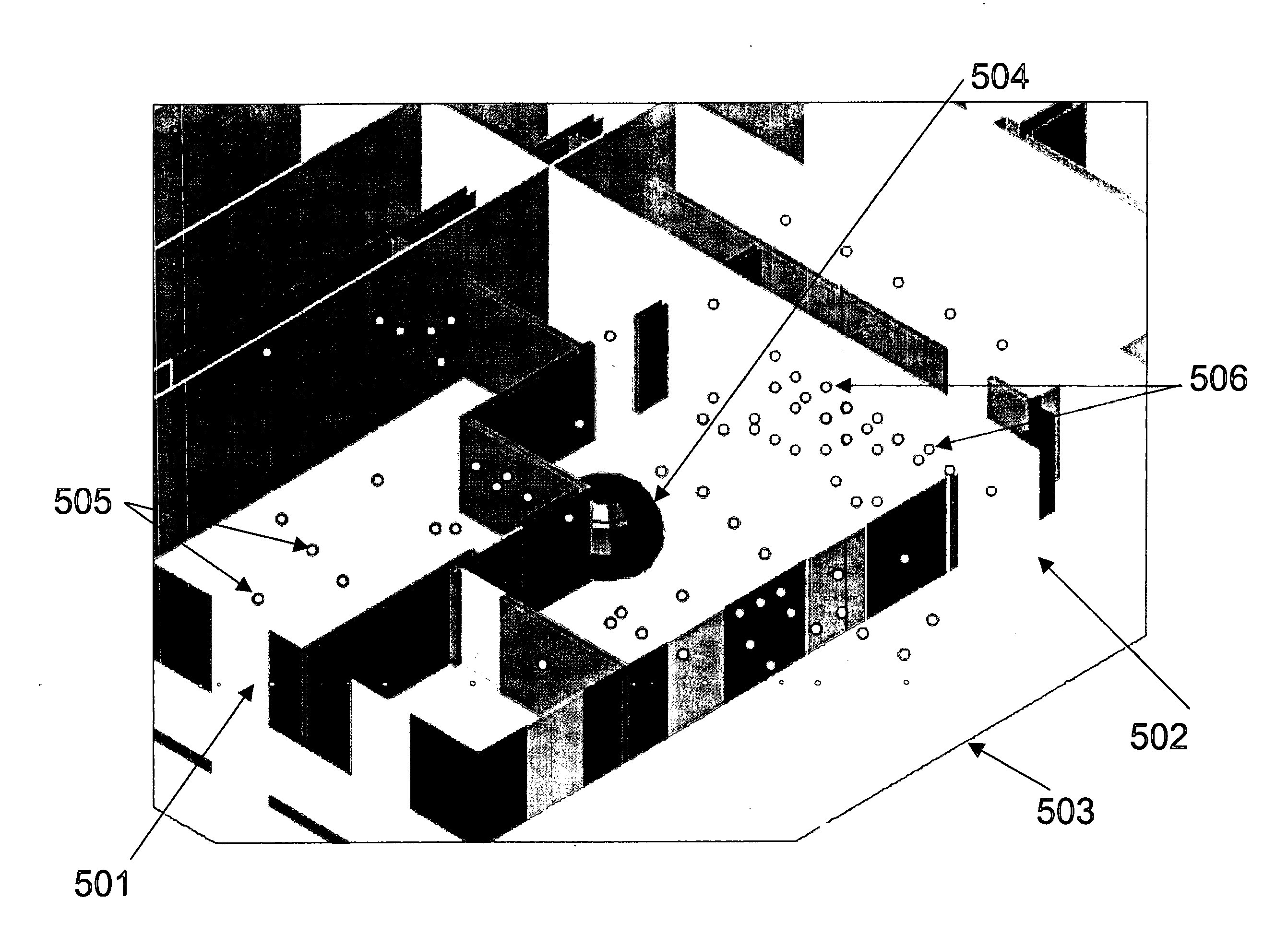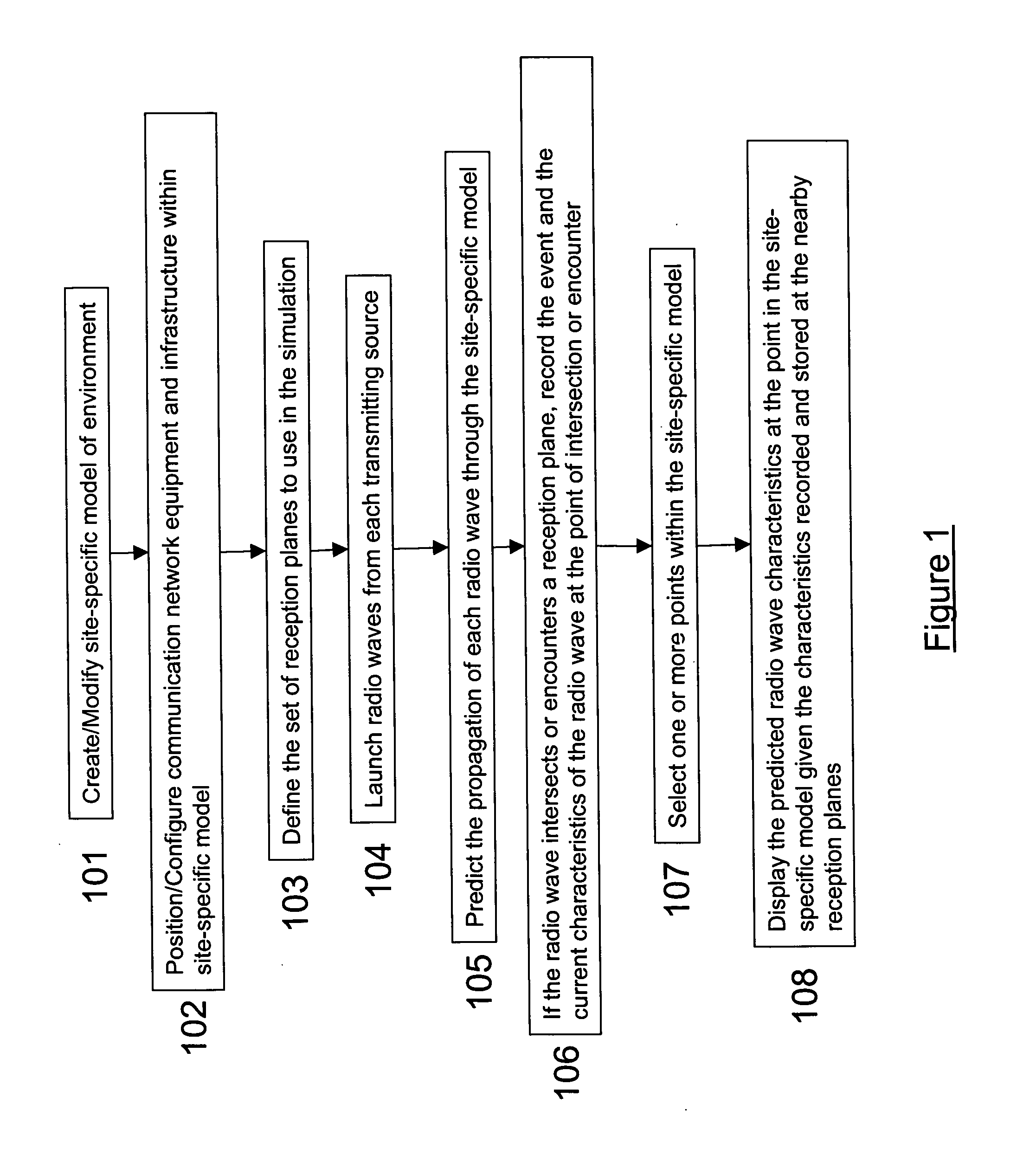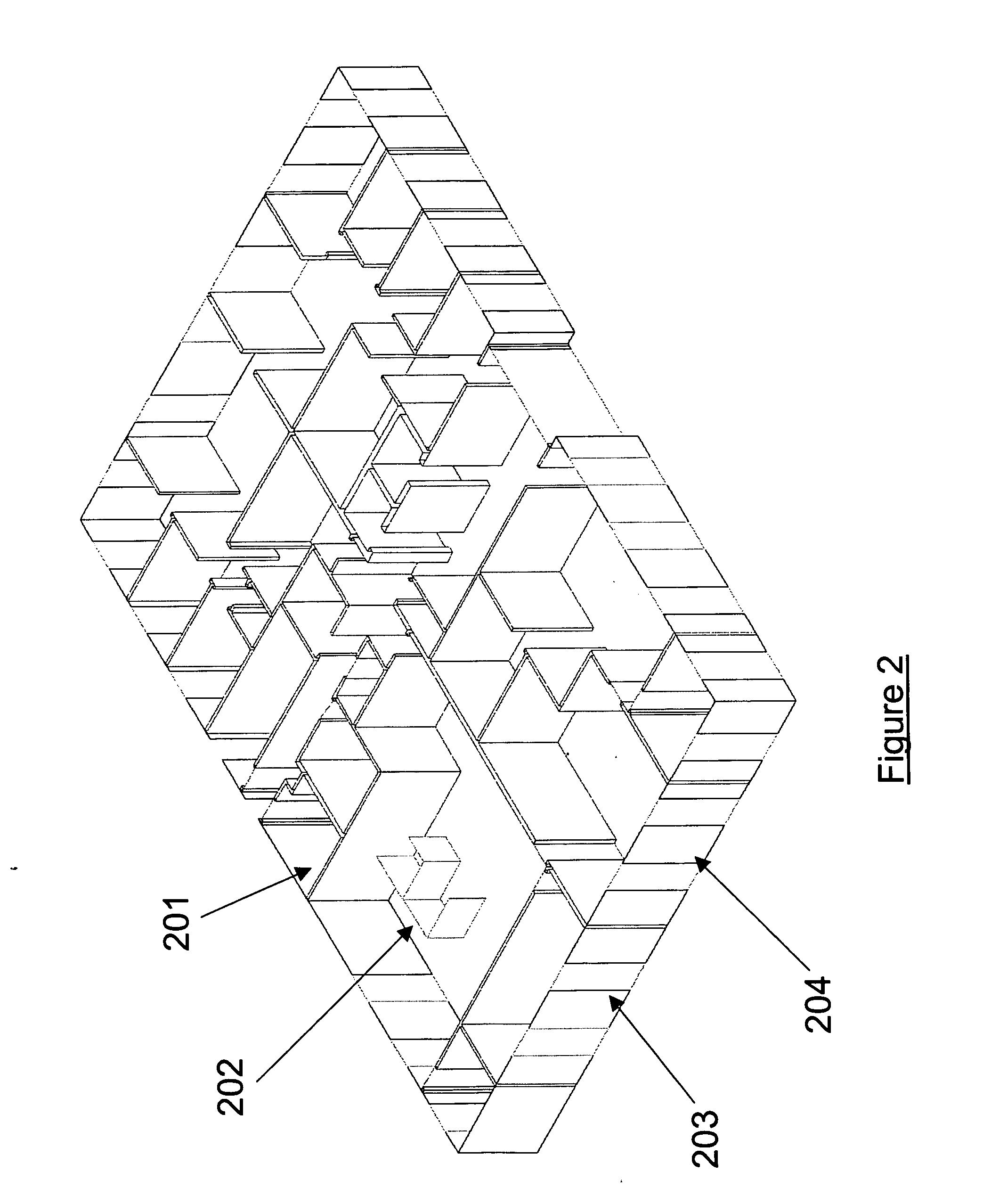System and method for ray tracing using reception surfaces
a technology of ray tracing and reception surfaces, applied in the direction of antenna supports/mountings, electrical equipment, network planning, etc., can solve the problems of insufficient coverage, pbx (private branch exchange) system or wireless local area network (wlan) can be rendered useless, and the cost of in-building and microcell devices providing wireless coverage is diminishing
- Summary
- Abstract
- Description
- Claims
- Application Information
AI Technical Summary
Benefits of technology
Problems solved by technology
Method used
Image
Examples
Embodiment Construction
[0050] The design of communication systems is often a very complex and arduous task, with a considerable amount of effort required to simply analyze the results of system performance. Using the present method, it is now possible to improve the accuracy and efficiency of the prediction of communication system performance. The present invention is a significant advance over the prior art through its use of a novel method of capturing and analyzing predicted radio wave propagation data in a ray tracing engine.
[0051] Referring now to FIG. 1, there is shown the general process of the present method. In order to begin analyzing a communication network, a site-specific computer representation of the environment in which the communication network is or will be deployed is created 101. The present invention uses 2-D or 3-D computer aided design (CAD) renditions of a part of a building, a building, or a collection of buildings and / or surrounding terrain and foliage. However, any information r...
PUM
 Login to View More
Login to View More Abstract
Description
Claims
Application Information
 Login to View More
Login to View More - R&D
- Intellectual Property
- Life Sciences
- Materials
- Tech Scout
- Unparalleled Data Quality
- Higher Quality Content
- 60% Fewer Hallucinations
Browse by: Latest US Patents, China's latest patents, Technical Efficacy Thesaurus, Application Domain, Technology Topic, Popular Technical Reports.
© 2025 PatSnap. All rights reserved.Legal|Privacy policy|Modern Slavery Act Transparency Statement|Sitemap|About US| Contact US: help@patsnap.com



